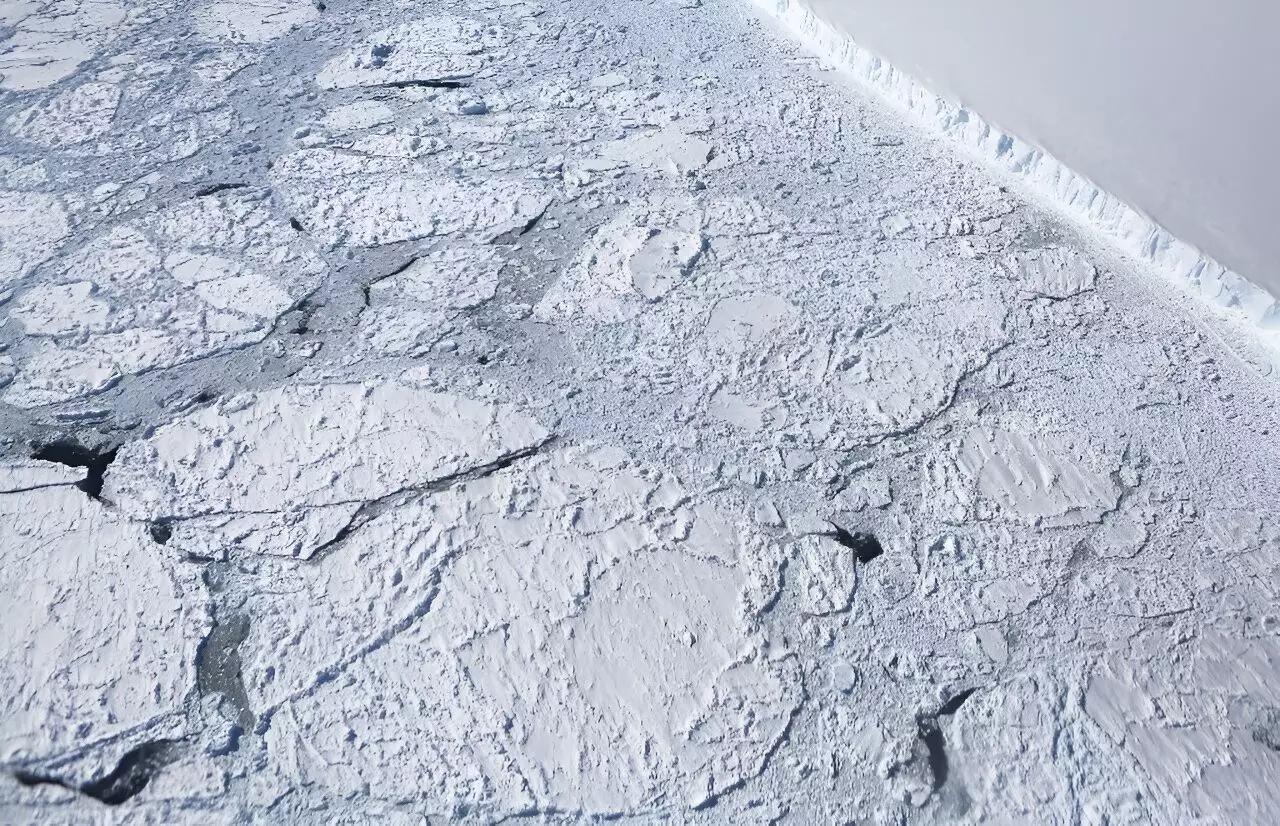The sea ice surrounding Antarctica has faced an alarming decrease, reaching a record low surface area during its peak size this winter. According to a preliminary analysis conducted by the US National Snow and Ice Data Center (NSIDC), the maximum extent of Antarctic sea ice reached a mere 16.96 million square kilometers (6.55 million square miles) on September 10, a significantly reduced figure compared to previous years. This finding has raised concerns among scientists and environmentalists alike, as it indicates a significant deviation from historical records.
The NSIDC highlights that the current sea ice maximum is the lowest ever recorded between 1979 and 2023, marking a substantial departure from previous trends. This reduction is particularly noteworthy considering the immense size difference, with the current pack ice being 1.03 million square kilometers smaller than the previous record. To put this into perspective, it is roughly equivalent to the combined surface area of Texas and California. NSIDC scientist Walt Meier expressed his astonishment, dubbing it a “record-smashing sea ice low in the Antarctic.”
Furthermore, the decrease in sea ice was observed uniformly around nearly the entire continent, rather than being concentrated in a specific region. This suggests a widespread phenomenon rather than a localized event, further exacerbating concerns surrounding the long-term implications for Antarctic sea ice.
The alarming trend does not stop at the winter maximum. Even during the height of the austral summer in February, the Antarctic sea ice pack hit a record low extent of 1.79 million square kilometers. This extraordinary occurrence, combined with the subsequent slow growth back during winter, has left scientists puzzled. In contrast, the Arctic experienced its own challenges, with an equally concerning low of 4.23 million square kilometers, marking the sixth lowest minimum in 45 years of recordkeeping.
Scientists remain divided regarding the cause of this dramatic shift in Antarctic sea ice. While some hesitate to establish a direct link to global warming, climate models have historically struggled to accurately predict changes in the Antarctic ice pack. However, the NSIDC suggests that the downward trend is somewhat connected to warming in the uppermost layer of the ocean. This hypothesis raises concerns that the decline may indicate the start of a long-term trend for Antarctic sea ice, as global ocean temperatures continue to rise.
Although the immediate impact of melting pack ice on sea levels is negligible due to its formation from freezing salt water already in the ocean, its disappearance intensifies global warming. The reflective nature of the ice ensures that a larger proportion of the Sun’s rays are bounced back into the atmosphere. As a result, the loss of sea ice further amplifies the impact of global warming. In addition, the exposed coastline of Antarctica faces increased wave action, which could destabilize the freshwater ice cap and endanger coastal ecosystems.
However, the NSIDC offers a glimmer of optimism, suggesting that the increased wave action may lead to greater accumulation near the coast, partially offsetting the threat of rising sea levels. This hypothesis presents a potential safeguard against the potential catastrophic consequences of melting land ice.
The declining size of Antarctic sea ice, reaching a record low winter maximum, presents a significant cause for concern. The far-reaching implications of this trend, from global warming to coastal stability, necessitate continued research and a collaborative effort on the part of scientists, policymakers, and the global community. Only through a comprehensive understanding of the factors influencing this decline can we hope to devise proactive solutions to mitigate further loss and preserve the delicate ecosystems of the Antarctic.



Leave a Reply